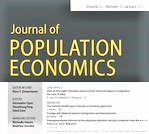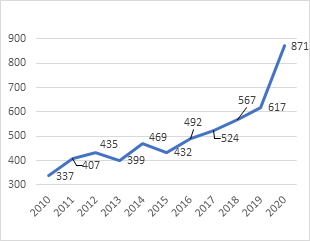A new paper published ONLINE FIRST freely accessible finds that the minimum working age raised from 14 to 16 in Spain, while the compulsory education age remained at 14. The reform decreased mortality at ages 14–29 among men by 6.4% and women by 8.9%, mainly from a reduction in deaths due to traffic accidents. However, the reform also increased mortality for women ages 30–45 by 7%.
Minimum working age and the gender mortality gap
by Cristina Bellés-Obrero, Sergi Jiménez-Martín & Judit Vall Castello
Published ONLINE FIRST 2021: Journal of Population Economics
READLINK: https://rdcu.be/cq2lY

Author Abstract: In 1980, a few years after its democratization process, Spain raised the minimum working age from 14 to 16, while the compulsory education age remained at 14. This reform changed the within-cohort incentives to remain in the educational system. We use a difference-in-differences approach, where our treated and control individuals only differ in their month of birth, to analyze the gender asymmetries in mortality generated by this change. The reform decreased mortality at ages 14–29 among men by 6.4% and women by 8.9%, mainly from a reduction in deaths due to traffic accidents. However, the reform also increased mortality for women ages 30–45 by 7%. This is driven by increases in HIV mortality, as well as by diseases related to the nervous and circulatory systems. We show that women’s health habits deteriorated as a consequence of the reform, while this was not the case for men. The gender differences in the impact of the reform on smoking and drinking should be understood in the context of the gender equalization process that affected women were experiencing when the reform took place. All in all, these patterns help explain the narrowing age gap in life expectancy between women and men in many developed countries while, at the same time, they provide important policy implications for middle-income countries that are undergoing those gender equalization processes right now.

EiC Report 2020
SSCI IMPACT FACTOR 2.813 (2020) from 1.840 (2019) & 1.253 (2018)
SSCI 5-Year Impact Factor 3.318 (2020) from 2.353 (2019) & 2.072 (2018)
Journal of Population Economics
Access to the recently published Volume 34, Issue 3, July 2021.
LEAD ARTICLE OF ISSUE 3, 2021:
The safest time to fly: pandemic response in the era of Fox News
by Maxim Ananyev, Michael Poyker and Yuan Tian
OPEN ACCESS: Free Readlink – Download PDF
The Global Labor Organization (GLO) is an independent, non-partisan and non-governmental organization that functions as an international network and virtual platform to stimulate global research, debate and collaboration.
Ends;

